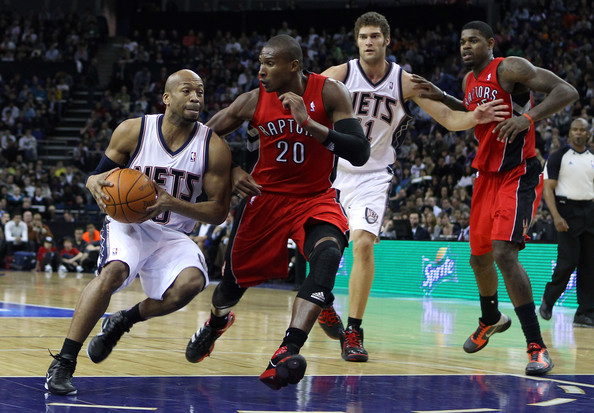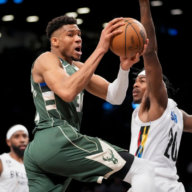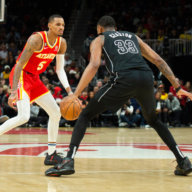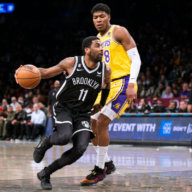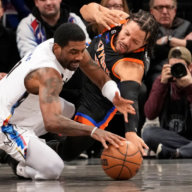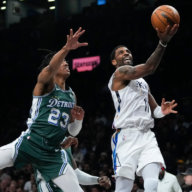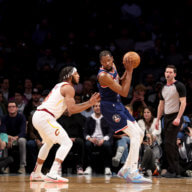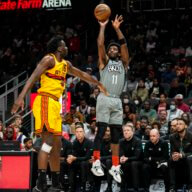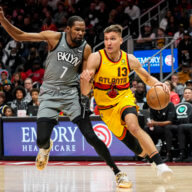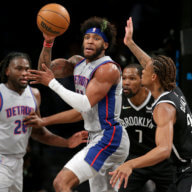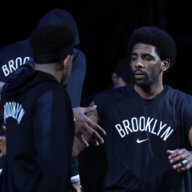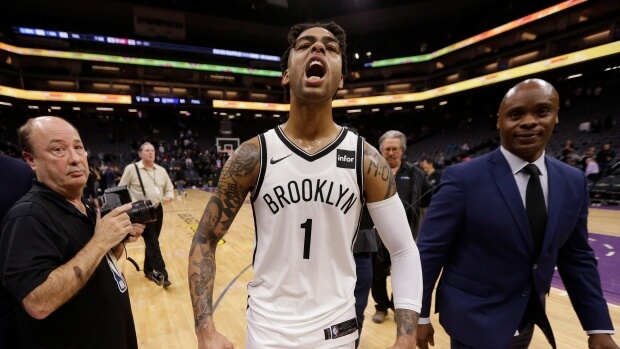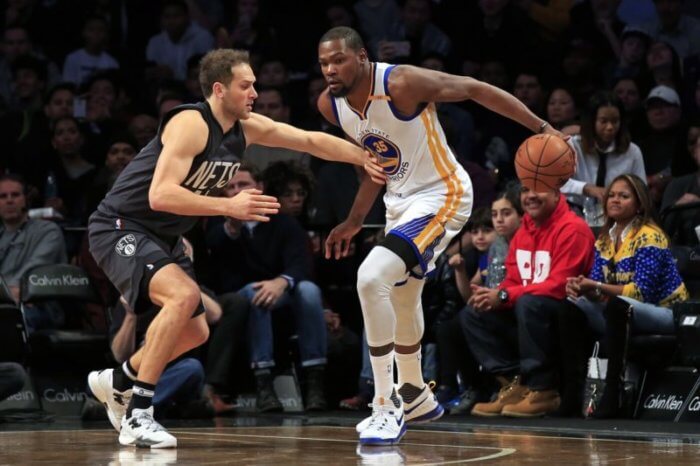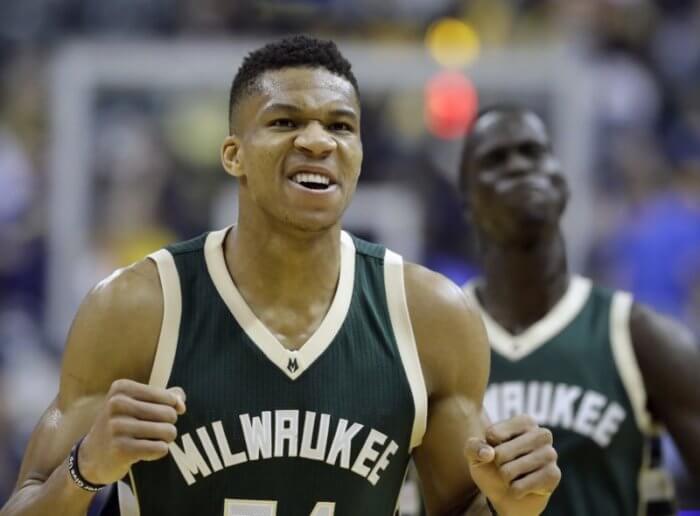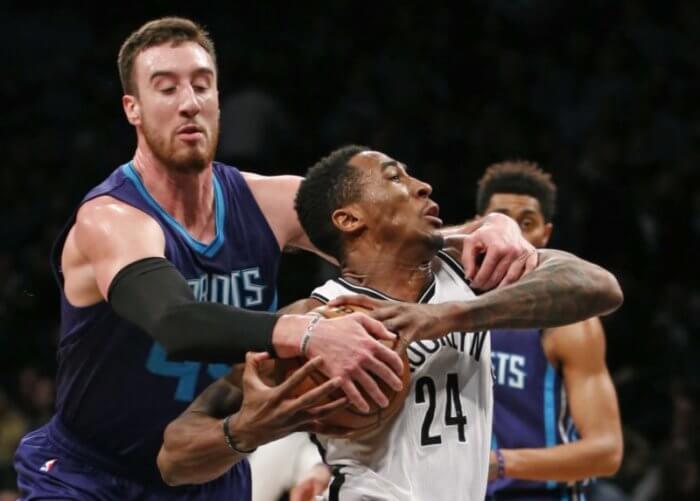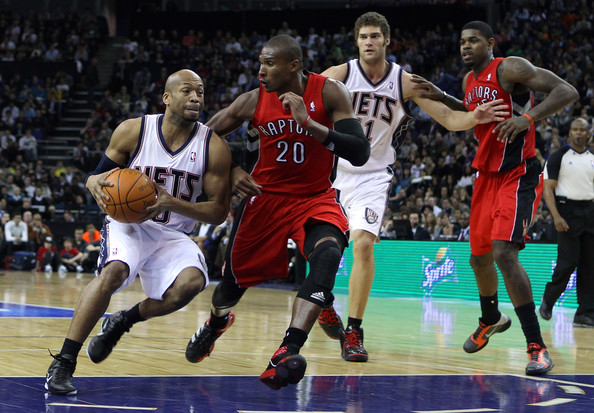
This isn’t so much a superlative post as it is just one to point out some interesting statistical trends in the Nets’ 2010-2011 season, but it still warrants inclusion in our review series here on Nets Are Scorching. So I went to the NBA’s new sleek StatsCube to uncover some of the more compelling numerical notes on this season.
(As soon as you have a chance, go ahead and play around with StatsCube a little bit. You can get a lot of data out of there, and the application possibilities are nearly endless. It’s worth a look.)
Here are a couple of the highlights from my investigation:
Give the Reigns to Gaines
Sundiata Gaines was a no-risk pickup by the Nets in the second half of the season to get some playing time will the other point guards spent all kinds of time in the infirmary. He wasn’t supposed to do all that much, other than provide some effort and passing. While offensive production certainly wasn’t the hallmark of Gaines’ injury-shortened stint with the Nets this season, examining his on-off splits on StatsCube provided some rewarding nuggets with respect to his value to the Nets:
 As you can see, Gaines actually had a profound effect on the Nets’ offense when he was in the game. Inexplicably, he facilitated the creation of a lot of three-point looks, as the Nets’ long-range attempts increased by 50 percent when he was on the floor.
As you can see, Gaines actually had a profound effect on the Nets’ offense when he was in the game. Inexplicably, he facilitated the creation of a lot of three-point looks, as the Nets’ long-range attempts increased by 50 percent when he was on the floor.
More alarming, though, was has impact on the Nets’ rebounding. Both the offensive and defensive rebounding totals went up when Gaines was on the floor, and so did the team’s rebound rate. One might argue that it had to do with Gaines’ mostly playing with the second unit (when Brook Lopez was not on the floor), but StatsCube showed that the Nets’ rebounding lines were virtually equal whether or not Lopez was in the game.
The rebounding increase can probably be explained simply with regard to effort, as Gaines was a very tenacious player who loved to rebound. Maybe that dedication and commitment was contagious, and all the Nets looked to go harder on the boards with him on the court.
The three-point shooting is a bit harder to understand. By no means is Gaines an elite distributor, and yet he was creating many more open looks for shooters when he was on the court. Furthermore, take note of the zone-by-zone shooting discrepancies in on- and off-court splits for Gaines:
 Gaines had a jaw-dropping effect on the Nets’ shooting everywhere except the corners and the not-at-rim paint area. The latter is easily attributable to the fact that he was almost always playing with Johan Petro, who fired away from there with regularity but without efficiency to match. It’s not so easy to identify why there was no correlation in his passes for threes above the break and those to corner shooters.
Gaines had a jaw-dropping effect on the Nets’ shooting everywhere except the corners and the not-at-rim paint area. The latter is easily attributable to the fact that he was almost always playing with Johan Petro, who fired away from there with regularity but without efficiency to match. It’s not so easy to identify why there was no correlation in his passes for threes above the break and those to corner shooters.
Considering, though, that he fired just three attempts from the corners and 34 from above the break himself, he just stayed in his comfort zone by passing to shooters in that area more often, too.
The main caution one should take away from this analysis is sample size. Gaines didn’t play all that much with the Nets, so his benefit to the offense could have been mere coincidence. Still, for someone who barely costs the team anything in terms of salary-cap space, these stats are justification enough to sign him on for a backup deal next season.

